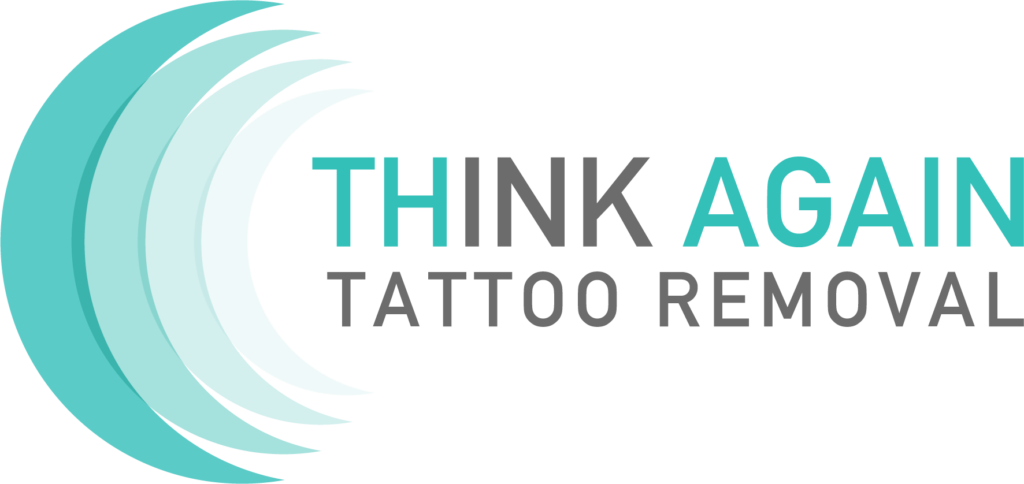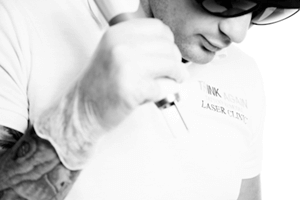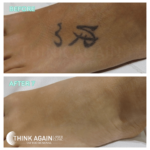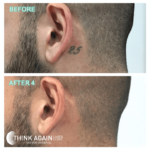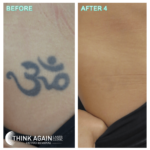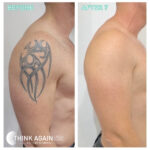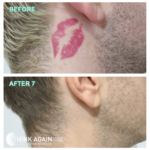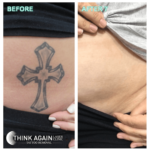I can almost guarantee that you have absolutely no idea. You’re not alone either. While it is commonplace in society to have a tattoo, knowing the ingredients in the ink that is being injected below your skin, is not.
Why is this important for laser tattoo removal you may ask?
Tattoo Removal requires a specialised laser like our Quanta Discovery Pico Plus to penetrate through the top layer of skin; hitting and absorbing only into your tattoo ink in the second layer.
Since not all tattoo ink is made using the same ingredients, the efficiency of the laser tattoo removal process can be easier and more efficient treating some inks and more difficult for others. The unfortunate thing is, there is no way to work this information out prior to treatment. There are literally thousands of tattoo inks on the market, tattoo ink can also be made at home by combining a range of ingredients making the removal process much more complex. Different countries have different regulations, making it almost impossible to guarantee what is in each brand of ink.
The Joint Research Centre (JRC) who provides independent scientific advice to the European Commission advises that problematic chemicals are mostly found in bright coloured inks with potential metal impurities such as chromium, nickel, copper, and cobalt. According to the JRC Report, red is the most problematic colour with consistent reported cases of allergic reactions and hypersensitivity.
Mike, CEO of Think Again has many tattoos, but has always had problems with the red ink in his tattoos. “If the ink is really bright in color, it usually contains dangerous stuff,” Tattoo Artist Bergström – American Chemical Society.
In one survey of 229 tattoo inks by Swiss regulators, nearly a quarter of inks analysed contained the antiseptic benzoisothiazolinone, which is a skin irritant.
While each country now has stronger regulations for tattoo ink, it wasn’t always that way. Now phased out of use, Cinnabar, a Mercury Sulfide pigment, was once a popular bright red in tattoo formulations.
Most tattoo inks technically aren't inks, they are commonly made up of pigments, primarily metal salts, some other ingredients include plastics and vegetable dyes. This pigment provides the bright colour in the skin and is suspended in a carrier solution to disinfect it while providing ease of application.
It is not uncommon for ink to be made with heavy metals like lead and cobalt metal. Iron Oxides, carbon black, Aluminum, Lead and Mercury sulfide are all names you would be familiar with but I am almost certain you wouldn’t expect to find them in your tattoo ink.
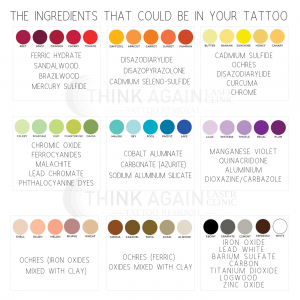
The quality of ink still stands as one of the key factors that contribute to your tattoo removal process. While we can guarantee at Think Again that you are being provided with the highest level of service, technology and by an experienced operator, we cannot guarantee the efficiency of the laser process for each type of ink.
At Think Again Laser Clinic we offer a free consultation, which we use to educate our clients on tattoo removal, our process and to provide an expectation for the removal of your tattoo.
Call 1300 1 NO INK (1300 166 465) to speak to a specialist today!
2/188-190 Victoria Road, Rozelle 2039
Sydney’s #1 rated Tattoo Removal Clinic

References:
Helemenstine, A. M. 2017 ‘What are the ingredients in Tattoo Ink? Tattoo ink Chemistry’, ThoughtCo, American Chemical Society.
